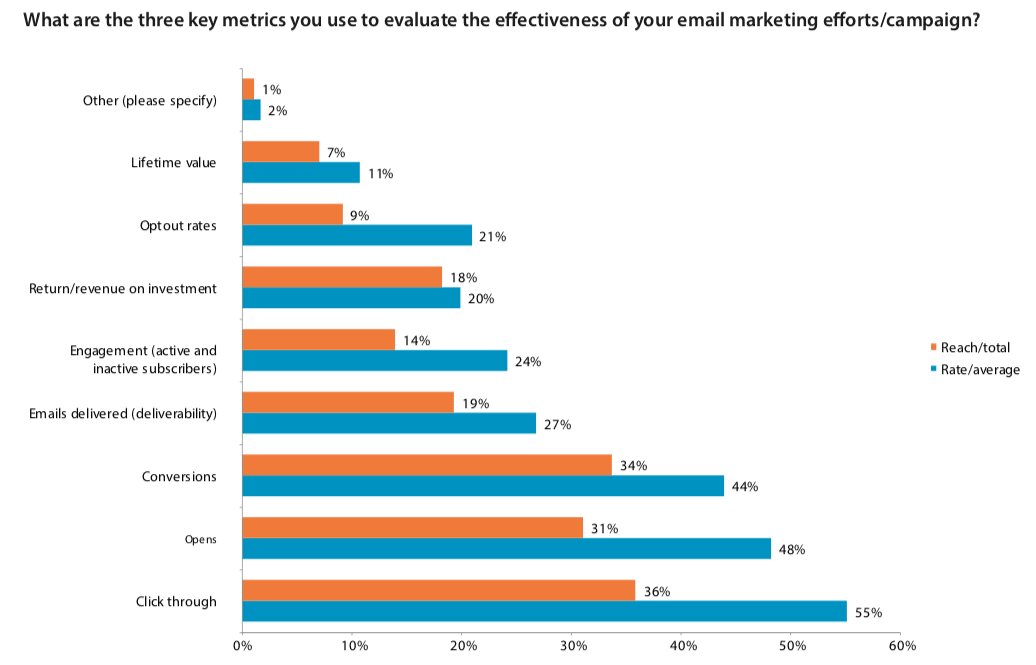Chart of the Day: Research shows the most popular measurements and KPIs for email marketing evaluation
I’ve been taking a look at the latest trends in email marketing based on the DMA Email tracker in advance of speaking at the Email Innovations Summit at Data-driven business later in the month.
Since the focus is data or insights-driven business, I was interested to see how evaluation of email marketing has moved on (or not).
I like the DMA email tracker report since it asks respondents to a survey to give an estimate of the average ROI of email marketing.
This always shows the power of email marketing as a relatively low-cost responsive medium which drives results in many industry sectors…
In 2018, the ROI of email marketing is £32.28 for every £1 spent, up from £30.03 last year.
Metrics and KPIs used to evaluate email marketing
Digging into the details of how email marketing is evaluated, which measures are used? Since there are many potential measures, the DMA asked for ‘three key metrics’. These are the responses:

It’s perhaps no surprise that the open and click response metrics are the two most popular, but this suggests to me that many businesses are missing out on the opportunity to review the ‘measures that matter’ for email marketing. For me, the top three measures that are most important to driving results are Engagement (active and inactive subscribers), return on investment / revenue and lifetime value.
It’s understandable that opens and clicks are top since measuring monetary value is less straightforward for non-transactional sectors, but reviewing engagement through time is key to the health of an email marketing programme regardless of the industry.
Research source
- Source: DMA 2018 Email tracker
- Sample: 289 respondents. Respondents represented a range of department types, sectors and career levels. Of those answering the relevant question, 36% were B2B, 32% in B2C, and 32% were involved in both B2B and B2C marketing. The reported career levels were 17% senior, 61% mid and 22% junior.
- Recommended Smart Insights resource: Advanced Lifecycle Email marketing guide